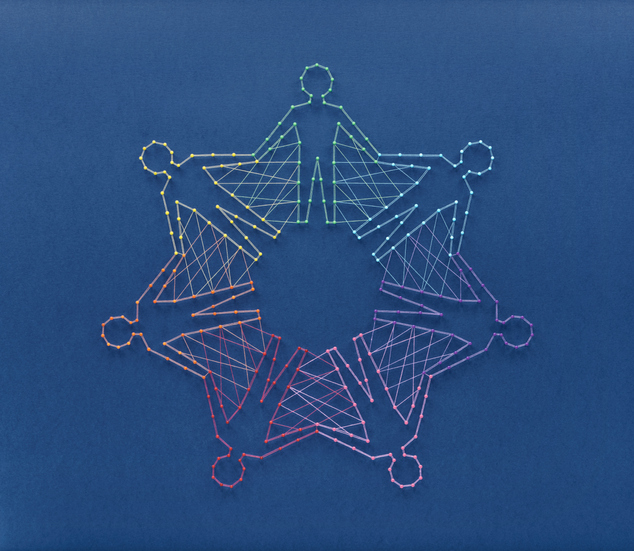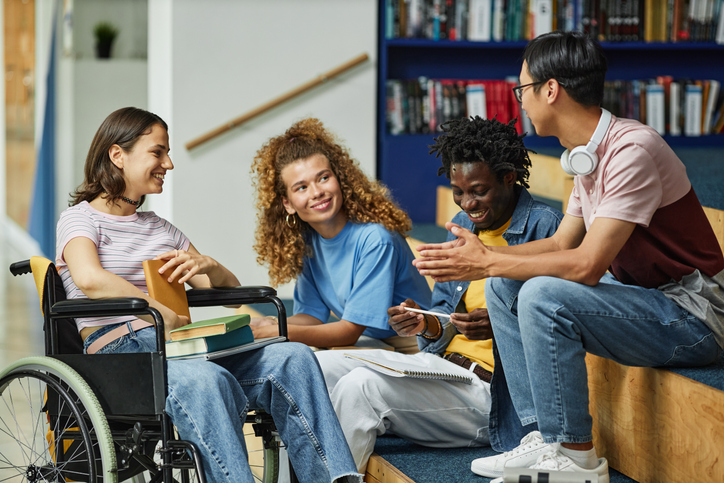
Dr. Kennette Thigpen, LCSW VP of Clinical Crisis and Specialty Services
By Dr. Kennette Thigpen, Licensed Clinical Social Workers, LCSW
It used to be that the tough growing-up talk parents had to have with their kids was about sex. Now, parents of Black children must worry about an additional talk: on racism, discrimination, and police brutality.
How can we address these huge and disturbing issues with our children? Every parent will likely have a different approach and a unique style, suited to who they are and their special relationship with their children. Age and maturity matters, too. Kids at different ages have different levels of understanding of complex and difficult topics.
The key is to approach this talk with an acceptance of a difficult reality: We can only control what we can control. We can work to influence change, but we alone can’t make the world change. What we can control is how we behave, how we react to challenging situations, how we raise our children to be kind and resilient, and how we talk about these issues with them.
Take the lead from your child as to when they are ready for this talk and what they are ready to understand. Answer their questions honestly and from your heart. Do your best to prepare them for the world they will be entering with confidence and pride in who they are.
1. Talk about it.
When a disturbing event related to race, violence, or police brutality is in the news, provide children with the opportunity to talk about what they have seen or heard:
- Encourage them to ask questions and express any concerns they may have. Don’t force them to talk if they are not ready. Remember that this is not a one-time discussion. This is an enormous issue that we should discuss with our children on an ongoing basis, not just in moments of pain and trauma. We also can’t let our own struggles and challenges cloud how we discuss or don’t discuss these issues.
- If you’re talking with your child after a specific incident, explain to your child what has happened in a way that’s understandable to them. Your adult perspective helps to put things in context for them. You might explain that not all police officers are bad, for example, and most police officers do their best to see that people are OK.
- Pay attention to what your children are watching or hearing. You’re not the only source of information for them. Discuss what they’ve seen and heard and how they understand it.
- Remind your children that what they see on the news does not represent the way things are everywhere or every day. It’s a hard reality that news tends to focus on the worst aspects of life. Tragedy makes better headlines than ordinary acts of kindness and generosity. We don’t hear about the good police officers who play basketball with the neighborhood kids or the police officer who saves a baby’s life. Sharing accurate information will also help children have a better understanding of what has happened. Without accurate information, children will make up their own stories to makes sense of what they are seeing and hearing—and what they imagine can sometimes be scarier than the reality of the situation.
2. Teach children to say how they feel.
Encourage your children to talk about how they feel. You can model that by letting them hear how you feel. When you do that, make sure you are sharing actual feelings and not hateful statements. Instead of saying, “I hate all police officers, they get on my nerves,” which is a hurtful statement, try saying, “I am really frustrated at this moment,” which expresses your feelings. By observing your behavior and how you talk, children will pick up on the fact that they, too, can and should express feelings and not hurtful statements.
Don’t just wait for your children to share their feelings. Prompt them to talk about their feelings when you notice that they seem worried, down, or mad about something. That can be as simple as saying, “It looks like you are feeling sad.” It’s normal for children to feel intense emotions about issues of race or violence, including feelings of sadness, anger, fear, stress, or anxiety. Show that you understand and accept their feelings. Don’t dismiss them as unreasonable. Instead, talk with them about why they feel that way and help them manage their emotions.
Be aware of how you act and react in the presence of your children. Your children are watching you and taking cues from you on how to talk and behave. By watching you, they are learning how to manage strong emotions and deal with tough situations. As parents, we must also take care of ourselves.
3. Listen.
When your children are open to talking, give them your full attention. Don’t interrupt them, attempt to finish their statements, judge their thoughts, or minimize their feelings, no matter how silly or illogical they might seem. For example, after seeing events of police brutality on the news, your child might think that every police officer they encounter might shoot them or mean them harm. There’s genuine fear in that thinking. Validate the fear rather than dismissing it, but also correct any misinformation or misconceptions. By listening, you may be surprised by what you learn. Young children, in particular, can be worried about things you might never suspect.
4. Ask open-ended questions and probe.
Ask open-ended questions to learn what your child is thinking and feeling. Closed-ended questions that yield a “yes” or “no” response will not give you much insight. Asking your child what they know about the event is a great place to start. From there you can ask questions to figure out what they understand and how it is affecting them. “What is the hardest thing about this for you?” “What are some other things you worry about?” Both the level of understanding and the emotional reactions will likely be very different for children of different ages. As you and your child talk, clarify any incorrect information.
Keep in mind that you may get questions you don’t know the answers to. Children can be creative and deep thinkers. Be honest when you don’t have an answer to a question. There’s no need to make things up. It’s better to say something like the following:
- “I don’t know the answer to that, and I’m not sure anyone does. I do know, however, that many thoughtful people throughout the world are working hard to understand this issue.”
- “That’s an interesting question, and I don’t know the answer. How can we find that out together?”
5. Encourage your children to ask questions.
Even when the topic is difficult for you, encourage your children to ask questions. Children may have irrational fears after watching a news report because they misunderstand something. By encouraging them to ask questions, you can learn about those misunderstandings and the fears they may be causing. Hearing their questions can give you the chance to soothe your child by sharing reassuring information. You can be honest and explain some of the ways the world is unjust, but you can also temper that by letting your child know that many good people are working hard to make the world safer and fairer for the future.
If your child seems to be watching too much news coverage of a traumatic event, you can redirect their attention to other more productive and positive activities.
6. Provide reassurance.
It’s important to offer calming support after a traumatic event, such as an incident of police brutality. Tragedy can rattle our sense of safety and our children’s, and children look to their parents and other trusted adults for reassurance that they are safe and secure. Reassure your child:
- You will be there for them to offer love and support.
- They can ask you questions anytime.
- They are safe and so are the people they care about.
- It’s OK for them to be scared, upset, or angry.
Share real information that your children may not be seeing in the news:
- Tell them about the helpers (the good police officers, the doctors, or others who are playing helpful roles).
- Point out examples of police officers doing the right thing.
- Explain to them what people they do not know are doing to help keep them safe and make things better. Provide real examples.
7. Do as you say.
Remember that you are your children’s first and most important teacher. They are watching and learning from you each and every day, whether or not you intend to teach them. That careful observation and mimicry by children is called learned behavior. Show your children kindness and love, even when you may be feeling anxious or angry. Model compassionate and helpful behavior. Teach them positive ways of interacting with people and the world around them.
8. Your response is important.
If you’re feeling emotional, take a deep breath, gather your thoughts, and respond in a measured way. Rein in your impulse to react with anger or other intense emotions. By watching you, your child is learning important lessons about how to cope when things get tough. Children are tuned into the actions, energy, and feelings of the adults in their lives, and they take their cues from us. Our own unresolved issues will only increase our children’s fear. It is imperative that we demonstrate to our children that emotions can be managed in healthy ways.
While it’s important to present a calm and comforting front and to soften the rawest of our emotions, there’s no need to hide your emotions completely. Sharing your feelings about a traumatic event can help your children see that their own feelings are normal and can be managed.
Don’t go to the extreme of being overly protective either. It’s normal to want to keep your child safe, but you also want them to feel that the world is safe, not that the only way to be safe is with your protection.
9. Take action.
Children often feel powerless when it comes to events, such as police brutality. The feeling of being powerless comes from feeling the pain of others, not knowing what to do to make things better, and the compassion from within. Encouraging children to do something can counteract this sense of powerlessness and provide them with a sense of control.
You might encourage your children, either with you or on their own, to do the following:
- Write letters to victims and their families.
- Get involved in a group with other like-minded people around an issue in need of change.
- Research a particular event to gain more understanding.
- Write a letter to the editor of a local newspaper about the issue.
- Raise money for a charity related to the event.
- Start conversations about race, violence, and the related, unresolved traumatic history in our country, bringing together minority and non-minority individuals.
- Express themselves with art, music, writing, or making videos.
10. Minimize the risk of secondary trauma.
Secondary trauma is like the wave effect from a traumatic event. We may not be the victims of the event or have experienced it directly, but we feel the impact. That can be from the graphic power of imagery in the news or because the event touches nerves from our own experiences. To minimize the risk of secondary trauma, limit your children’s exposure to media and social media coverage of traumatic events. This doesn’t mean shielding children completely from the news and other sources of information, but it does mean being aware of how much coverage of the traumatic event they are watching. It’s your role as a parent to contain that exposure and put boundaries in place.
The residual effect of exposure to traumatic events can affect children’s behavior in ways that may be confusing or distressing for both the child and the parent. With support, understanding, and love, we can help our children heal and thrive, even in a far-from-perfect world.
Excerpted and adapted from the book Rated Black: A Parent’s Underground Guide to Dealing with the Police, by Dr. Kennette Thigpen (Swiner Publishing, 2019).
© 2020 Kennette Thigpen. Used by permission of the author.




































